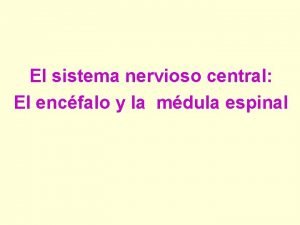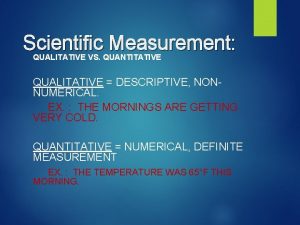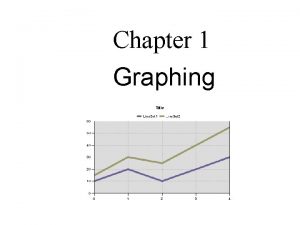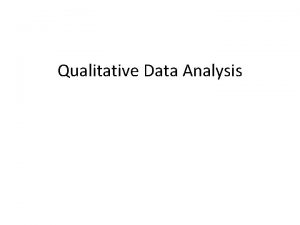Graphing in Science SNC 2 P Qualitative vs




















- Slides: 20

Graphing in Science SNC 2 P

Qualitative vs. Quantitative • Qualitative observations are descriptive: “The amplitude of the pendulum decreased. ” • Quantitative observations contain numerical measurements: “The mass of the pendulum was 150 g. ”

Quantitative Data Quantitative data should contain all the digits that were measured. For example, if lengths are measured to the nearest mm, write 10. 0 cm (NOT 10 cm).

Tables Both qualitative and quantitative data canbe recorded and presented in tables. For example,

Graphs Quantitative data may be presented analyzed using graphs. For example, Graph 1: Distance-time information for a cart travelling along a track

Graphs Rules for graphing: • You must use a ruler and graph paper.

Graphs Rules for graphing: • You must use a ruler and graph paper. • Graphs must be numbered and titled.

Graphs Rules for graphing: • You must use a ruler and graph paper. • Graphs must be numbered and titled. • A graph must take up an entire page. (The axes should be about 2 cm from the edge of the page. )

Graphs Rules for graphing: • You must use a ruler and graph paper. • Graphs must be numbered and titled. • A graph must take up an entire page. (The axes should be about 2 cm from the edge of the page. ) • The axes must be labeled with the variables (including units).

Graphs More rules for graphing: • The scale on each axis should start at 0 and go up to just beyond the last data point in steps of 1, 2, 5, 10, 20, 50, or etc.

Graphs More rules for graphing: • The scale on each axis should start at 0 and go up to just beyond the last data point in steps of 1, 2, 5, 10, 20, 50, or etc. • Points are plotted in pencil with a circle around each sharp dot.

Graphs More rules for graphing: • The scale on each axis should start at 0 and go up to just beyond the last data point in steps of 1, 2, 5, 10, 20, 50, or etc. • Points are plotted in pencil with a circle around each sharp dot. • A straight line or smooth curve of best fit is drawn through the points. (Do NOT connect the dots. )

The Line/Curve of Best Fit The line should extend past your points sothat you can extrapolate (estimate values outside your data set).

Trends in Graphs The line or curve shows you the trend in the data.

Linear Increase This graph shows a linear increase: as the one variable increases, the other increases linearly.

Increase at an increasing rate Here, as one variable increases, the other increases at an increasing rate. (This is not necessarily an exponential increase. It could be a quadratic increase. The two are not the same!)

Increase at an decreasing rate Here, as one variable increases, the other increases at an decreasing rate.

Linear Decrease Linear decreases are rare. If you get this, you’ve probably madea mistake.

Decrease at an decreasing rate You are more likely to see this: As one variable increases, the other decreases at a decreasing rate.

No Relationship This graph shows NO RELATIONSHIP between the independent and dependent variables.
 Hpps logo
Hpps logo Rombencefalo
Rombencefalo Snc-1
Snc-1 Snc lajaa venissieux
Snc lajaa venissieux Società in nome collettivo
Società in nome collettivo Síndrome de kleeblattschädel
Síndrome de kleeblattschädel Paul mcenaney
Paul mcenaney Graphing qualitative data
Graphing qualitative data My favourite subject computer
My favourite subject computer Political science methodology
Political science methodology What was the control in redi's experiment
What was the control in redi's experiment Qualitative vs quantitative science
Qualitative vs quantitative science Qualitative vs quantitative political science
Qualitative vs quantitative political science Natural vs social science
Natural vs social science Six branches of science
Six branches of science Natural science vs physical science
Natural science vs physical science Applied science vs pure science
Applied science vs pure science Rapid change
Rapid change Think central k5
Think central k5 Rule of 70 population growth
Rule of 70 population growth Windcube
Windcube






































